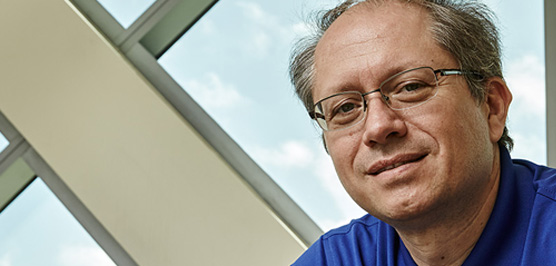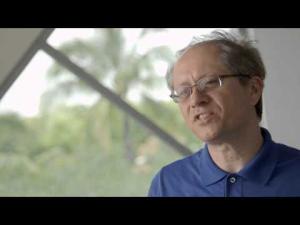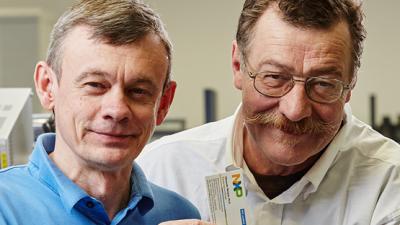Jean-Christophe Giron
Electronically tintable glass
Finalist for the European Inventor Award 2015
This new smart glass changes opacity to control the amount of light that enters. Unlike previous incarnations of tintable glass technologies that change colour automatically when certain thresholds of heat or light are reached, SageGlass can be controlled according to personal preferences, ringing in a new era of architectural lighting. The innovation promises to slash around 30% of a building’s energy consumption, compared to using standard glass windows.
Societal benefit
Buildings account for a stunning 40% of global energy consumption, but the installation of SageGlass can significantly lower the energy required to maintain a functional working or living space. Considering the end costs of full-blind solutions (installation, maintenance and upkeep), SageGlass costs the same or even less than traditional glass windows. The lion’s share of the savings, however, is long-term: achieved through limiting costs for electricity and air-conditioning by up to 20%.
SageGlass doesn’t only protect the environment and the bank accounts of building developers and dwellers. It also preserves the valuable objects inside by blocking 98% of solar radiation, which causes interior fading.
Economic benefit
SageGlass is already having a big impact on several architecture projects, such as the Kimmel Center for the Performing Arts, in Philadelphia, Pennsylvania, the U.S. General Services Administration Building in Washington, DC and at the Dow Corning Solar Energy Exploration and Development Centre in Seneffe, Belgium. At the Kimmel Center, SageGlass keeps interior temperatures pleasant despite the extra solar energy from a 45-metre-tall barrel-vaulted glass roof.
SAGE Electrochromics operates in the smart glass window market whose revenues are expected to reach € 566 million (US$ 700 million) by 2024. In 2012, SAGE Electrochromics became a fully-owned subsidiary of Saint-Gobain, a multinational producer of innovative construction materials based in Paris with more than 186,000 employees and net profits of € 504 million (US$ 618 million). That same year, a high-volume manufacturing facility for producing SageGlass opened in Minnesota. SAGE Electrochromics continues to operate as a separate entity under the Saint-Gobain ownership.
How it works
Within the coating, two so-called transparent conductor (TC) layers surround the electrochromic (EC) layer, the ion conductor (IC), and the counter electrode (CE). The electrochromic layer is responsible for the tint of the glass.
When a low voltage of electricity (less than 5V DC) is applied to the transparent conductor layer that touches the counter electrode, the lithium ions and electrons transfer from the ion conductor layer to the electrochromic layer. This process makes the coating appear darker.
To control the glass, users have a choice of a building automation system, a wall switch, or a combination of both. They can pre-set tint levels in intermediate phases between 1% and 60% visible light transmission.
The inventors
Giron studied physics and chemistry at ESPCI ParisTech, and he spent three years at the Lawrence Berkeley National Laboratory researching nickel oxide electrochromic thin films, before receiving his PhD in inorganic chemistry from the University Pierre & Marie Curie. Giron is listed as an inventor on about 500 different patents filed around the world.
Giron’s interest in lighting and transparency extends beyond his vocation. He is an avid collector of natural crystals with an extensive collection of crystals with secondary minerals of lead and zinc that have been gathered from the Southwestern U.S. and throughout the world.
Did you know?
Media gallery
Contact
European Inventor Award and Young Inventors Prize queries:
european-inventor@epo.org Subscribe to the European Inventor Award newsletterMedia-related queries:
Contact our Press team#InventorAward #YoungInventors







